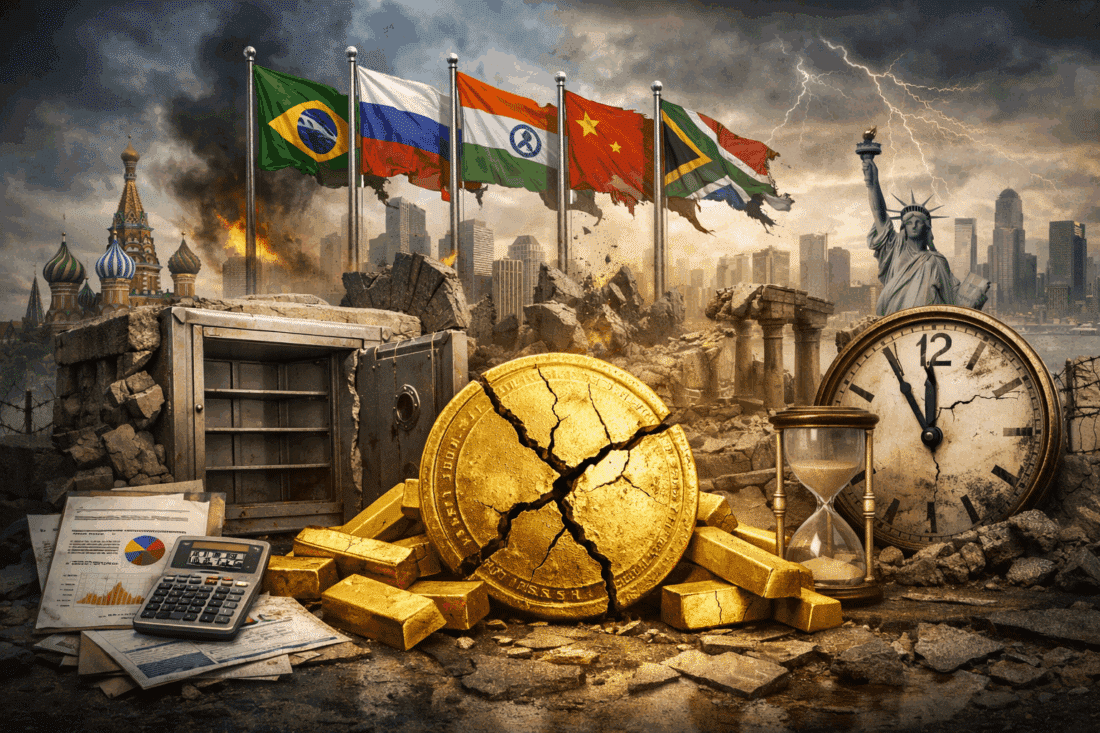
How De-Dollarization Could Reshape Key Sectors of the S&P 500
The Sectors Most Vulnerable
Energy
Impact: Significant
The energy sector, particularly oil and gas, may experience volatility if de-dollarization leads to oil being traded in other currencies. While a shift away from the dollar could increase currency risks and complicate pricing mechanisms, U.S. energy firms might see some increased competitiveness if the U.S. dollar weakens, making their exports cheaper. However, the transition would likely introduce price volatility, which could affect profits.
Materials
Impact: High
Materials companies, which deal in metals and chemicals, could face increased costs if raw materials are priced in currencies other than the U.S. dollar. This could pressure margins. However, if the U.S. dollar declines, it could also make U.S.-produced materials more competitive in international markets, offering a buffer against rising costs.
Industrials
Impact: Moderate to high
Export-heavy industrial firms, such as those in aerospace and defense, may see a boost in demand for their products if the U.S. dollar weakens, as U.S. exports would become cheaper for foreign buyers. However, these firms would still need to manage currency fluctuations and hedging costs if de-dollarization causes volatility in global trade.
Technology
Impact: Moderate
Tech firms with global reach could feel the effects of de-dollarization through currency fluctuations, but the impact may be mixed. A weaker U.S. dollar could actually increase foreign revenues when converted back to dollars, benefiting companies with significant international sales. While their software and services aren't as tied to physical goods, companies would need to manage pricing and currency risks in different regions.
Consumer Discretionary
Impact: Moderate
For luxury goods in this sector, a weaker U.S. dollar could actually make U.S. brands cheaper abroad, potentially increasing demand. However, if these companies rely on overseas manufacturing, rising production costs due to currency shifts could offset some of the benefits of increased sales abroad. Balancing currency impacts will be key.
Consumer Staples
Impact: Moderate
Companies in this sector may see increased costs for imported goods or raw materials if de-dollarization pushes up the cost of non-dollar purchases. However, staples tend to be more stable in terms of demand, and a weaker dollar could enhance the global competitiveness of U.S. brands, helping to mitigate the impact of rising input costs.
Sectors Likely to Be Less Affected
Communication Services
Impact: Moderate
Like tech, this sector is global but less tied to physical goods. Currency fluctuations could introduce some volatility in international earnings, but the sector's focus on services means the overall impact should be manageable. A weaker dollar could boost foreign revenues, as international earnings would translate into more dollars.
Financials
Impact: Mixed
For financials, the impact of de-dollarization could go in both directions. Banks with international operations could face currency risks, but a weaker dollar might stimulate domestic lending and borrowing, as inflation and interest rates rise. Additionally, banks that facilitate international transactions might experience increased demand for currency exchange services.
Health Care
Impact: Low to moderate
Most health care revenues come from domestic markets, but large pharmaceutical companies with global exposure could benefit from a weaker dollar, which would boost the value of foreign sales. Overall, the health care sector is likely to be more insulated from the impacts of de-dollarization compared to sectors like energy or industrials.
Real Estate
Impact: Low to moderate
While most of the real estate sector is focused on U.S. properties, international investment in U.S. real estate could increase if the U.S. dollar weakens, meaning increased foreign ownership of U.S. properties. Real Estate Investment Trusts (REITs) with international exposure could experience some volatility, but the majority of the sector is expected to remain stable.
Utilities
Impact: Low
Utilities are generally safe from the impacts of de-dollarization. Their focus on providing essential services such as energy and water to domestic markets means they are one of the least affected sectors. They may experience some indirect effects if energy prices fluctuate, but these are unlikely to significantly disrupt the sector.
The Bottom Line
De-dollarization could reshape the playing field for U.S. companies, particularly those tied to global trade and commodities. However, not all sectors will feel the squeeze equally. Energy, materials, and industrials could see significant effects, while utilities, health care, and real estate are likely to weather the storm better. Investors should monitor which companies are most exposed to global currency risks and consider how a weaker dollar could benefit exports and international revenues as de-dollarization trends unfold.











